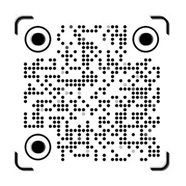Understanding the Mechanics of a Trailer Hitch Ball
Release Time:
May 31,2025
The Unsung Hero of Towing: Trailer Hitch Ball
When it comes to towing, there’s one little component that plays a monumental role: the trailer hitch ball. It may seem like a simple piece of hardware, but this small sphere is crucial for safe and effective towing. So, let’s dive into how it works and why it’s so important!
What Exactly is a Trailer Hitch Ball?
Alright, let’s break it down! A trailer hitch ball is essentially a rounded metal piece that connects your vehicle to a trailer via the hitch. Think of it as the trusty connector that ensures everything stays in place while you're on the road. It’s usually mounted on a ball mount and secured with a pin or a lock. Pretty nifty, huh?
How Does it Work?
Now, here’s where the magic happens. When you attach a trailer to your vehicle, the trailer hitch ball fits into a coupler on the trailer. This connection allows for a pivot point, which is essential for maneuverability. Without this, you’d be trying to turn a massive trailer without any flexibility—yikes!
For those who are curious, the weight distribution is key. The hitch ball enables the trailer to bear weight evenly, which helps prevent swaying and ensures a smooth ride. Just imagine driving with a trailer that’s bouncing all over the place—total chaos!
Choosing the Right Trailer Hitch Ball
Okay, so you know what a trailer hitch ball is and how it works, but how do you choose the right one? Good question! There are several factors to consider:
- Weight Rating: Each trailer hitch ball comes with a specific weight rating. Make sure to match it with the trailer’s weight to avoid potential disasters.
- Size: Hitch balls come in various sizes (typically 1-7/8”, 2”, and 2-5/16”). Pick one that fits your trailer’s coupler.
- Material: Most hitch balls are made from either steel or chrome. Steel is super durable, but chrome adds a shiny finish and corrosion resistance.
Choosing the right hitch ball is like finding the perfect pair of shoes: it needs to fit well and support you through every journey!
Installation Tips for Safety
Now, let’s get practical! Here are some tips to install your trailer hitch ball safely:
- Read the Manual: Before you start, always check your vehicle and trailer manuals for specific instructions.
- Tighten it Up: Ensure that the hitch ball is securely tightened. A loose hitch ball can lead to accidents—definitely not what you want!
- Inspect Regularly: Give your hitch ball a check-up every now and then. Look for any signs of wear or damage.
Safety first, folks! It’s always better to be safe than sorry.
Common Mistakes to Avoid
Even seasoned tower can make mistakes. Here are a few common slip-ups to steer clear of:
- Not Matching Weights: Never use a hitch ball that can’t handle your trailer’s weight. It’s a recipe for disaster.
- Ignoring Coupler Size: If the ball is too small or too big for the coupler, you’re setting yourself up for a bumpy ride.
- Overlooking Maintenance: Don’t forget to keep everything clean and lubricated.
Trust me, avoiding these mistakes can save you a world of trouble on the road!
In Conclusion
So, there you have it! The trailer hitch ball may seem like a small part of the towing equation, but its importance cannot be overstated. Understanding how it works and ensuring you have the right one can make your towing experience safe and enjoyable. Now, go out there and hit the road with confidence!
Key words:
Related Blog




